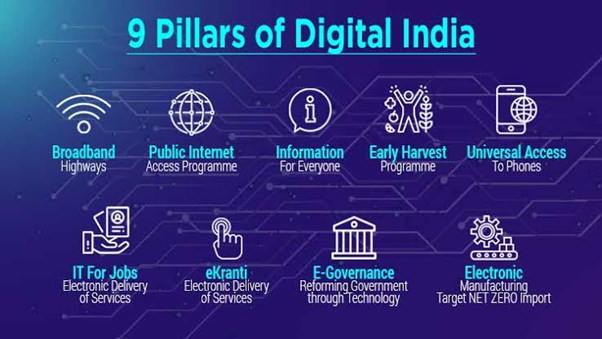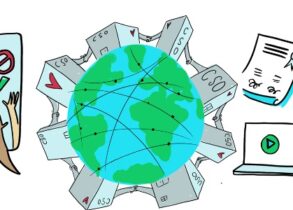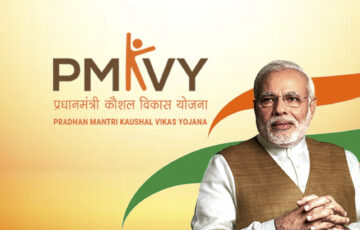Digital India Scheme-1.0
Relevance
- GS Paper 2 Welfare schemes for vulnerable sections of the population by the Centre and States and the performance of these schemes.
- Tags: #DigitalIndia #Scheme #ecommerce.
What is digital India Scheme?
The Digital India scheme is a flagship initiative of the Indian government launched in 2015. It is aimed at transforming India into a digitally empowered society and knowledge economy.
The program focuses on three core areas: providing digital infrastructure as a utility to every citizen, delivering government services on demand, and empowering citizens through digital literacy and access to resources.
It aims to ensure universal access to high-speed internet, enhance government operations through e-governance, promote digital literacy, and stimulate economic growth through technology. The scheme seeks to bridge the digital divide, foster innovation, and create a digitally inclusive and empowered nation.
Vision of Digital India
These vision areas are as follows:
Digital Infrastructure as a Core Utility to Every Citizen
- High-Speed Internet Access: Ensuring the availability of high-speed internet as a fundamental utility for delivering government services to all citizens.
- Digital Identity: Providing every citizen with a unique, lifelong, online, and verifiable digital identity, enabling easy access to government services.
- Mobile Phone and Bank Account Inclusion: Facilitating citizen participation in the digital and financial space by ensuring mobile phone and bank account access for all.
- Common Service Centres: Establishing easy access to Common Service Centres, which act as service delivery points for various government and private services.
- Public Cloud Storage: Offering shareable private space on a public cloud for individuals and businesses to store and access data securely.
- Cybersecurity: Ensuring a safe and secure cyber-space to protect citizens and organizations from cyber threats.
Governance & Services on Demand
- Integrated Services: Seamlessly integrating government services across departments and jurisdictions, simplifying access for citizens.
- Real-Time Service Availability: Making government services available in real-time through online and mobile platforms, enhancing accessibility and convenience.
- Portability of Citizen Entitlements: Allowing citizen entitlements to be portable and accessible through cloud-based solutions, reducing bureaucracy and red tape.
- Digital Transformation for Business: Digitally transforming government services to improve the ease of doing business, reducing paperwork and enhancing efficiency.
- Electronic and Cashless Transactions: Promoting electronic and cashless financial transactions, making payments and financial activities more convenient and secure.
- Geospatial Information Systems (GIS): Leveraging geospatial information systems for decision support systems and overall development planning.
Digital Empowerment of Citizens
- Digital Literacy: Promoting universal digital literacy to empower all citizens with the skills and knowledge to use digital technologies effectively.
- Access to Digital Resources: Ensuring that digital resources and services are universally accessible to all segments of society.
- Digital Services in Indian Languages: Making digital resources and services available in multiple Indian languages to cater to the linguistic diversity of the country.
- Collaborative Digital Platforms: Creating collaborative digital platforms that enable participative governance, encouraging citizen engagement in decision-making processes.
- Digital Document Submission: Eliminating the need for citizens to physically submit government documents or certificates by facilitating digital submission and verification processes.
Aim and objectives
The Digital India scheme seeks to bridge the digital divide, create a transparent and efficient governance system, and promote economic growth through technology. The main goals of the Digital India scheme are as follows:
- Digital Inclusion: The primary aim is to ensure that every citizen, regardless of location or socioeconomic status, has access to digital services, high-speed internet, and the skills to utilize them effectively.
- E-Governance: The scheme seeks to streamline government operations, making them more efficient, transparent, and citizen-centric. This includes the digitization of government processes and the provision of services online.
- Universal Digital Literacy: The scheme aims to promote digital literacy across the country, ensuring that every citizen can harness the power of digital technologies.
- Digital Infrastructure: Building a robust digital infrastructure that includes high-speed internet connectivity, data centers, and secure networks to support the growth of e-governance and digital services.
- Economic Growth: Fostering economic growth through digital technologies, enabling businesses to thrive and creating job opportunities in the digital and IT sectors.
- Empowering Citizens: Providing digital identities and access to digital resources, services, and information in multiple Indian languages to empower citizens and improve their quality of life.
- Digital Security: Ensuring a secure and resilient cyberspace to protect citizens and critical infrastructure from cyber threats.
- Green Technology: Encouraging the use of green technology and digital platforms for environmental sustainability.
- Innovation and Entrepreneurship: Fostering a culture of innovation and entrepreneurship in the digital sector, promoting the development of new technologies and startups.
Pillars
The Digital India scheme is built on nine key pillars, which serve as the foundation for its objectives and initiatives. These pillars encompass various aspects of the program and are as follows:
- Broadband Highways: The development of a robust digital infrastructure, including high-speed internet connectivity, to ensure that digital services reach even the remotest parts of India.
- Universal Access to Mobile Connectivity: Expanding mobile network coverage to enhance connectivity and accessibility, especially in rural and remote areas.
- Public Internet Access Program: Promoting the establishment of Common Service Centres (CSCs) to provide internet access and digital services in rural and semi-urban areas.
- e-Governance: Streamlining government operations and services by digitizing processes and making them available online, improving efficiency and transparency.
- e-Kranti (Electronic Delivery of Services): Accelerating the delivery of government services electronically to citizens, reducing bureaucratic red tape and enhancing convenience.
- Information for All: Providing digital resources and information in Indian languages, making it accessible to a diverse population.
- Electronics Manufacturing: Promoting the domestic manufacturing of electronic goods and hardware to boost the electronics industry and create job opportunities.
- IT for Jobs: Skill development programs to provide opportunities for the youth in the IT sector and empower them with digital skills.
- Early Harvest Program: Launching priority initiatives to deliver quick and tangible results, laying the groundwork for broader digital transformation in the country.
These pillars serve as the framework for the Digital India scheme, guiding its efforts to transform India into a digitally inclusive and empowered nation.
Digital India helping in e-governance
Digital India enhances e-Governance by digitizing services, promoting online portals, and using Aadhaar for authentication, making government services more efficient, accessible, and citizen-centric.
- Digitization of Government Processes: Through Digital India, many government processes have been digitized, reducing paperwork and improving the efficiency of operations.
- Online Service Delivery: Digital India aims to make government services available online, making it more convenient for citizens to access services and reducing the need for physical visits to government offices. This is a fundamental aspect of e-Governance.
- Digital Identity (Aadhaar): Aadhaar, a key component of Digital India, provides a unique digital identity to citizens. This digital ID is used to authenticate individuals for various government services, streamlining and securing access to these services.
- Common Service Centres (CSCs): Digital India encourages the establishment of CSCs, which act as service delivery points for various government and private services. These CSCs play a pivotal role in bringing e-Governance services closer to the citizens, particularly in rural areas.
- Online Portals and Mobile Apps: Government departments and agencies have developed and launched numerous online portals and mobile applications as part of Digital India to provide information, process applications, and deliver services efficiently.
- Electronic Payments: Digital India promotes digital payment methods for government services, facilitating faster and more convenient transactions, which is a core element of e-Governance.
- E-Governance Platforms: Various e-Governance platforms have been integrated into Digital India to provide a unified digital infrastructure for government operations. This helps streamline processes, improve transparency, and enhance the delivery of services.
- Real-Time Information and Updates: The Digital India program encourages government departments to provide real-time information and updates, ensuring citizens have access to the latest data and services.
|
Link With Financial Inclusion The Digital India initiative and financial inclusion are closely intertwined, as Digital India seeks to leverage digital technologies to promote financial inclusion among the population. Here’s how Digital India contributes to financial inclusion:
|
Mains question
Discuss the role of the Digital India initiative in transforming governance and analyze the challenges and opportunities it presents for India’s socio-economic development.






